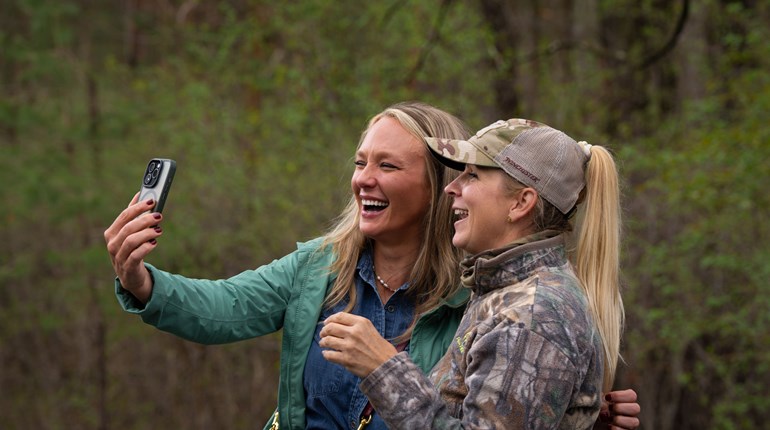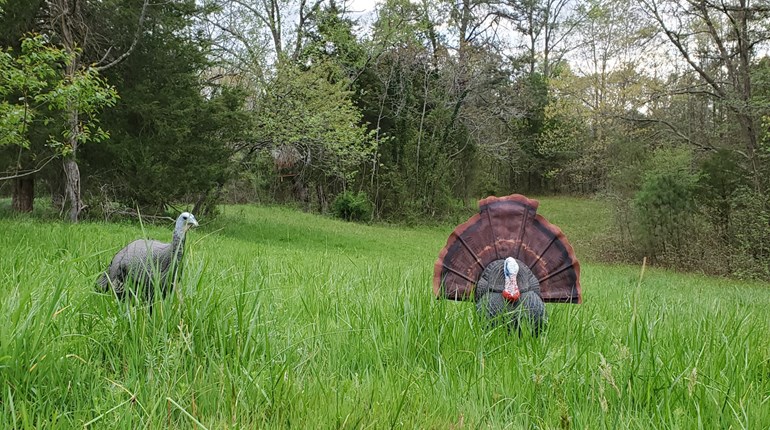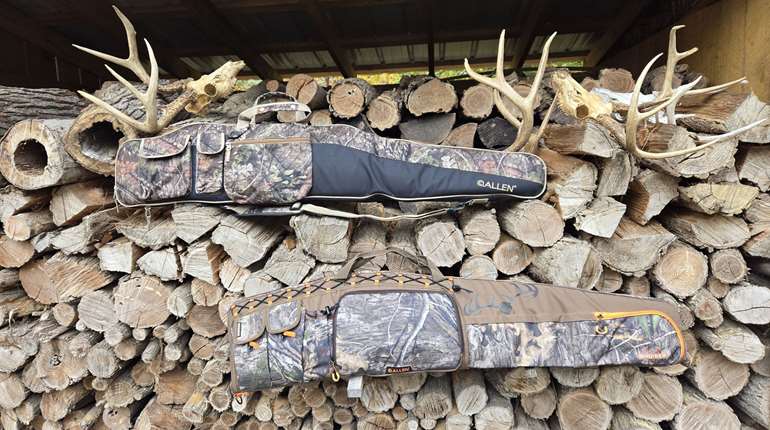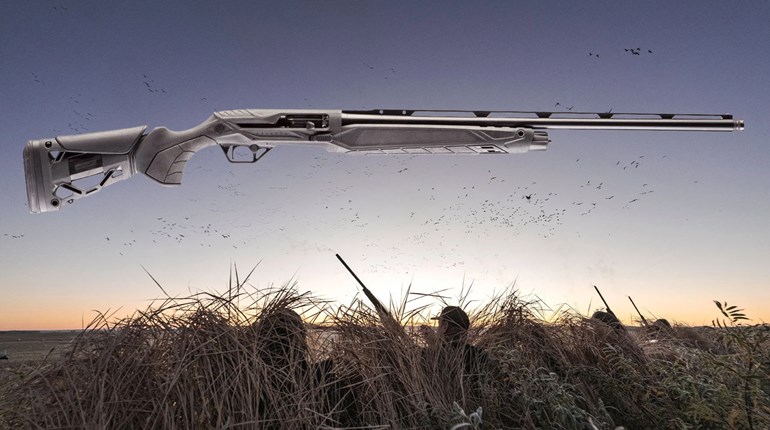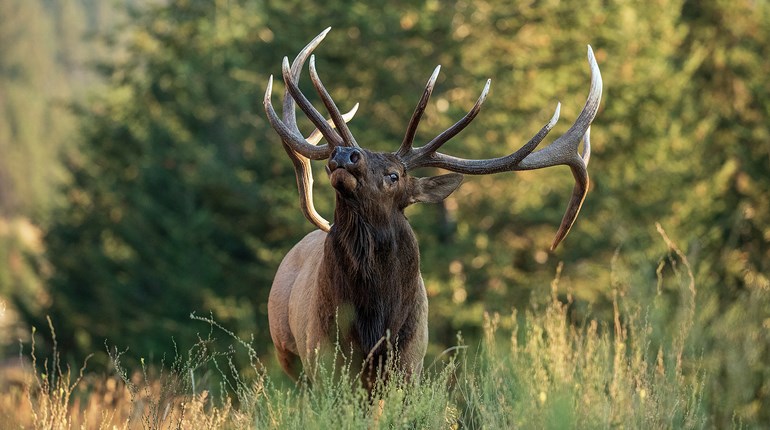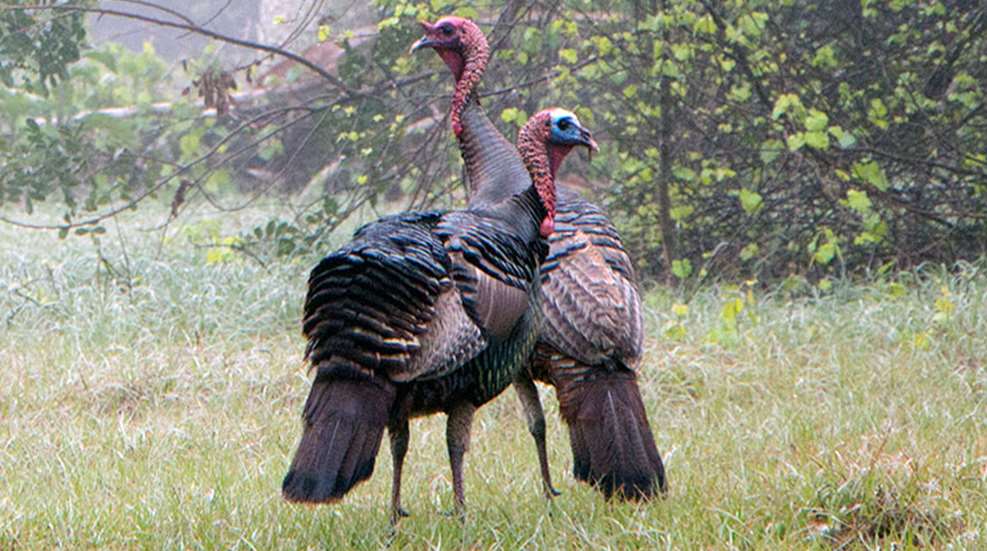
A gobble can mean anything or nothing much at all. There are “courtesy gobbles,” “shock gobbles,” “half gobbles,” “double gobbles” … . One November on opening day of deer season I watched a tom gobble to every gunshot, which in upstate New York is a lot of shock gobbling. So to figure out what a gobbler is telling us—and therefore what we need to do to get him into shotgun range—we have to read the context of the situation, the turkey’s tone and aggressiveness and more. Now, I realize this is something wise men learn not to do. When my wife, for example, wants me to explain the milieu around a conversation she missed—especially one involving women of any age—I’ve learned to shrug and say, “Me man. Me not understand sub-contextual analysis.” She sighs (another sound with many meanings) and I know I’m relatively safe behind my manly wall of stoicism. But we can’t do that with turkeys. To consistently kill gobblers we have to assess the context behind what they’re telling us when they gobble. Thankfully, they’re only so complicated.
A tom gobbles aggressively from the roost but shuts up when he hits the ground.
Did you hear a hen? If you’re close enough (you should set up as close as possible to a roost), did you hear more than one turkey fly down? If so, he’s likely strutting off with hens. Best to move on to another gobbler. If not, stay put. Call plaintively and then shut up. The tom might be a subordinate gobbler that lost his courage when he left his roost. If you’re close enough to his roost, and there aren’t any obstacles between you, a subordinate tom might come in silently.
A gobbler answers you every time, but he won’t come in.
Do his gobbles seem closer, then farther away, then closer again? If so, he’s likely strutting. The natural thing is for the hen to come to the gobbling tom. He might have hens or he might just think you should come to his strut zone. Get aggressive if this is the case, and listen for a responding hen. You might convince the tom to leave his strutting area and come to you or you might get into an argument with a hen. If so, repeat everything she says. She might decide to come over and kick your butt. If she does she’ll likely bring the gobbler. Otherwise there might be an obstacle between you and the gobbler. If this is the case, you need to reposition.
A tom answers your calls, but goes the other way.
Either he already has a hen with him or he’s heading for his strut zone. Whatever the reason, he’ll be tough to call in. Unless you can safely circle in front to intercept him, you should back out. The next time you hunt this bird position yourself between his roost and where he wants to go.
You’re sneaking along when a tom gobbles just out of sight.
This gobbler has likely heard you crunching leaves and thinks you’re a hen—humans and turkeys both have two feet and so can sound similar. Sit down immediately with your back against a tree. Call softly and get ready. This turkey should come right in.
A turkey gobbles and approaches, but stops out of range.
In open hardwoods and other terrain a tom, especially and older one, will often only come as far as he thinks he has to. He’ll stop and strut where he thinks the hen should be able to see him. Call a little and gauge his reaction. He might come closer. If the tom has been bumped by other hunters, he might not. If the gobbler seems relaxed and is an older bird try some fighting purrs or the spit-n-drum call. These calls can bring in a dominant bird; however, they can scare off a subordinate bird.
A gobbler answers once, but then doesn’t gobble again.
The tom might just have shock gobbled—some call this a “courtesy gobble.” He might be strutting for hens. If the gobbler is close—within 200 yards—be patient and listen for hens and to see if the tom will gobble on his own. Some toms will start walking your way. Such a bird might not gobble again until he thinks he should see the hen. If the tom was farther than 200 yards or if there is a stream or other obstacle between you and the gobbler it might make sense to move closer.
A gobbler responds to your calling but stops when you get close.
You’re likely dealing with a subordinate gobbler. He is afraid of getting thumped by a boss tom. Set up and be patient. Don’t call loudly.
A gobbler answers aggressively and begins to come but then shuts up.
The tom probably called in a hen. Wait 30 minutes or so to be sure the tom isn’t sneaking in and then back out. You’re better off trying to catch this gobbler when he’s alone. If you move in now you’ll only bump him.
It’s 10 a.m. when suddenly a gobbler answers you intensely.
During the period in the breeding cycle when hens are going to nest (they’ll lay one egg per day until they’re done and then will sit full-time on their clutch) they’ll often leave their gobbler in mid- to late morning to lay an egg. A tom that suddenly finds himself alone might become aggressive. Set up and begin calling. That bird will likely come in.
Several toms gobble to you from the roost, but only one gobbles after they fly down.
Even a group of subordinate toms (those without hens) have a dominant member of their group. Chances are good that if you’re patient, one or more of those toms will come to your calls. They might, however, come in cautiously, as they don’t want to be spurred by a bigger tom.
A tom is on the roost and gobbling, but not to you.
This gobbler isn’t interested in your calls. He has hens or has been bumped by a hunter. Late in the season some turkeys even become less hormonal. This will be a tough turkey to call in. Get close and mimic a fly-down. Try a few calls that have a different pitch or use a type of call he might not have heard before. Whatever the bird does, give him time to come in.












